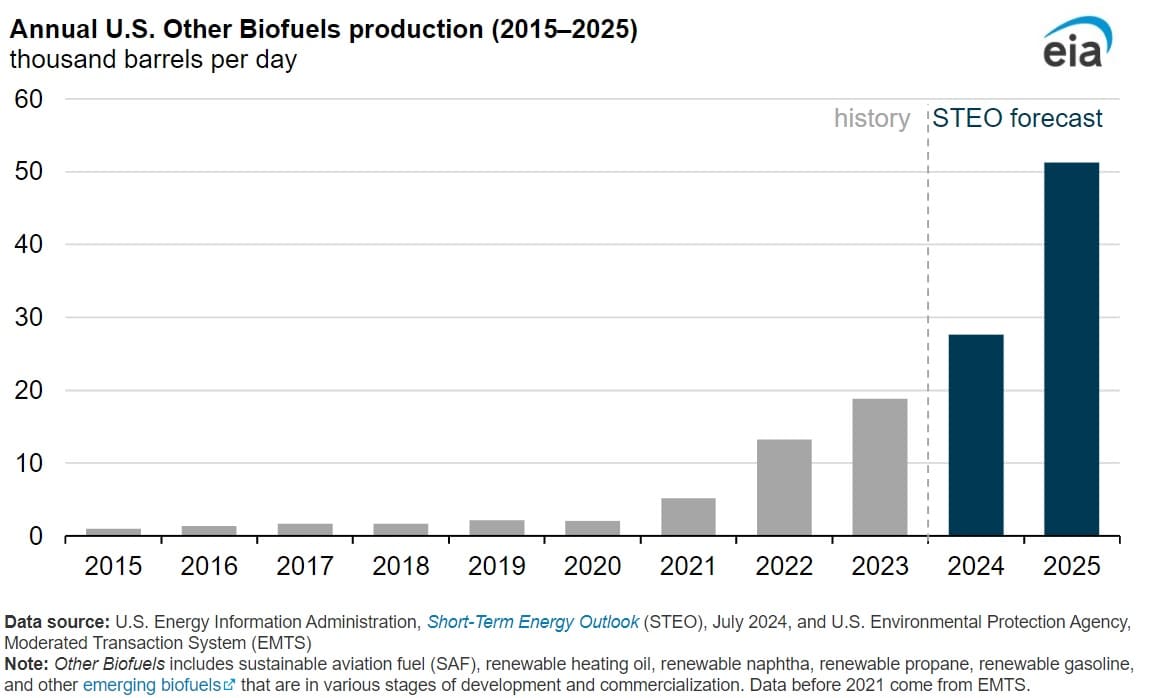U.S. Production Capacity for Sustainable Aviation Fuel Could Increase This Year: EIA

U.S. production capacity for sustainable aviation fuel (SAF) could rise from approximately 2,000 barrels per day (b/d) to around 30,000 b/d during 2024, if all planned capacity additions become operational, according to a July 17 report published by the U.S. Energy Information Administration.
SAF is an alternative to petroleum jet fuel and is formed from agricultural and waste feedstock and is utilized in blends with petroleum jet fuel. Funding for SAF has risen due to federal tax credits, the U.S. Environmental Protection Agency’s Renewable Fuel Standard and state initiatives and tax incentives encouraging the use of SAF. The U.S. Energy Department has set out a comprehensive roadmap, named Sustainable Aviation Fuel Grand Challenge, which plans to produce three billion gallons of sustainable aviation fuel annually by 2030, and 35 billion gallons by 2050. The initiative aims to achieve a minimum of a 50 percent reduction in life cycle greenhouse gas emissions compared to conventional fuel and meet a goal of supplying sufficient SAF to meet 100 percent of aviation fuel demand by mid-century.
Phillips 66’s Rodeo Renewed project is expected to produce around 10,000 b/d of SAF starting this summer, whilst Diamond Green Diesels Port Arthur SAF Project is expected to produce around 15,000 b/d of SAF by the end of 2024. During the beginning of the year, U.S. SAF production was in the 2,000 b/d region. The World Energy’s plant, located in California and Montana Renewables plant in Montana, were the only two plants that had the capability of producing SAF.
The U.S. consumed around 1.6 million b/d of petroleum jet fuel during 2023 and the agency expects jet fuel demand to exceed 2 million b/d during 2050. SAF production has previously accounted for a small percentage of Other Biofuels production due to restricted production capacity. The agency’s definition of Other Biofuels includes; renewable gasoline, renewable propane, renewable naphtha and renewable heating oil, among other developing biofuels, that are in different stages of growth and commercialization. U.S. production of Other Biofuels rose to 19,000 b/d during 2023, up from around 2,000 b/d during 2020.
The agency projects U.S. production of Other Biofuels to increase by around 50 percent during 2024 and almost double from 2024 to 2025. The key driver of the increase is higher U.S. SAF production capacity.
EnerKnol Pulses like this one are powered by the EnerKnol Platform—the first comprehensive database for real-time energy policy tracking. Sign up for a free trial below for access to key regulatory data and deep industry insights across the energy spectrum.
ACCESS FREE TRIAL